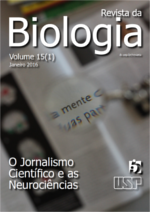The impact of scientific dissemination in the perpetuation of neuromyths in education
DOI:
https://doi.org/10.7594/revbio.15.01.02Keywords:
Neuromyths, neuroscience, science journalism, scientific myths, educationAbstract
Since the 1990s, considered the brain decade, there have been major breakthroughs in neuroscience, and information about neuroscience has been under the media spotlight, probably due to the interest from the general public on this subject. Among this information there are various neuromyths, which are misconceptions regarding scientific findings about brain functioning and behavior. These neuromyths are transmitted and perpetuated in various forums, such as in the educational field, which can use flawed concepts with potentially harmful consequences for society. In this paper we will initially present some examples of how information that is supposedly based on neuroscience findings - but that is actually not so - influences programs that aim to improve education. Our discussion will also tap on the role of science journalists, neuroscientists and educators in the development of evidence-based education, concluding that a better dialogue between these professionals is necessaryDownloads
Download data is not yet available.
Downloads
Published
2018-04-23
Issue
Section
Ensaio
License
We ensure that our journal does not retain any copyright and that these are exclusive of the author(s) of the text. In that sense, we intend to break any restrictions to the published material and to achieve more intensely our goal of communicating science.
How to Cite
Ekuni, R., & Pompéia, S. (2018). The impact of scientific dissemination in the perpetuation of neuromyths in education. Revista Da Biologia, 15(1), 21-28. https://doi.org/10.7594/revbio.15.01.02






